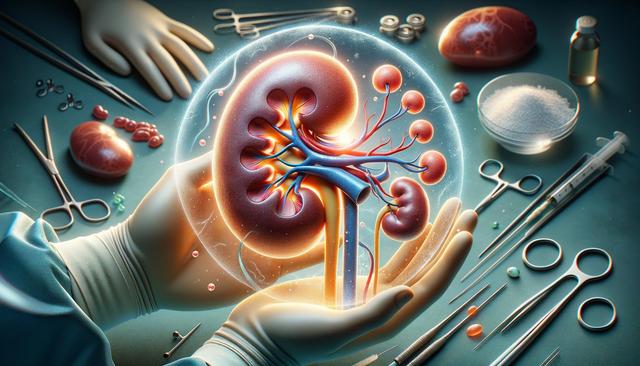Understanding Kidney Transplant Eligibility
Before entering the transplant process, it’s crucial to understand what to know about kidney transplant eligibility. Patients are evaluated based on several health and lifestyle criteria. These include overall physical health, the severity of kidney disease, and the presence of other conditions that may affect the success of a transplant. Medical teams will assess whether a patient is likely to benefit from the procedure and maintain good health post-transplant.
To get started, patients typically undergo a series of tests, such as blood and tissue typing, imaging scans, and psychological evaluations. A transplant team, which may include nephrologists, surgeons, dietitians, and social workers, collaborates to determine the patient’s readiness for a transplant. These evaluations help ensure a successful match and long-term outcomes.
Eligibility may also be influenced by factors like age, history of substance use, or previous transplants. While these do not automatically disqualify someone, they may require additional documentation or monitoring. Understanding these aspects can help patients better prepare for discussions with their healthcare providers and take the appropriate steps toward qualifying for a transplant.
How to Qualify for a Kidney Transplant in 2025
As medical guidelines evolve, so do the processes around how to qualify for a kidney transplant in 2025. Candidates need to meet specific clinical requirements and demonstrate a commitment to post-transplant care. This includes maintaining a healthy lifestyle, adhering to recommended treatments, and attending all follow-up appointments.
To qualify, patients should:
- Be diagnosed with end-stage renal disease (ESRD) or severe chronic kidney disease
- Have no active infections or untreated cancers
- Demonstrate psychological readiness and reliable support systems
- Remain smoke-free and substance-free
In 2025, more transplant centers are placing emphasis on patient education and active participation in treatment. Digital health tools and telemedicine appointments are increasingly integrated into the qualification process, making it more accessible for patients in remote locations. Understanding these modern qualification pathways can help candidates navigate the process more efficiently and confidently.
How the Waitlist Process Works
One of the most important aspects of the transplant journey is understanding how the waitlist process works. Once a patient is deemed eligible, they are placed on the national transplant waiting list. This list is managed by a centralized system that matches donors and recipients based on several criteria, including blood and tissue compatibility, urgency, and time on the list.
The waiting period can vary significantly—from a few months to several years—depending on factors like geographic location and blood type. Some patients may receive a kidney from a living donor, which can significantly shorten the wait time and improve transplant outcomes.
During the waitlist period, patients are encouraged to:
- Stay in regular contact with their transplant center
- Maintain their health and follow treatment plans
- Attend periodic evaluations to remain active on the list
- Explore living donation options through friends, family, or donor networks
Being proactive during this stage can make a substantial difference in readiness when a kidney becomes available.
Top-Rated Hospitals and Surgeons
Choosing the right medical team is essential to a successful transplant. Many patients seek care at one of the top kidney transplant hospitals in the US. These institutions are known for their advanced technology, experienced teams, and comprehensive transplant programs that guide patients from evaluation through recovery.
When researching the best kidney transplant hospitals in the US, consider:
- Patient survival rates and transplant success statistics
- Availability of support services like counseling and nutrition guidance
- Access to living donor programs
- Feedback from former patients and independent health rankings
In addition to hospitals, identifying top transplant surgeons near you is equally important. A skilled surgeon can significantly influence outcomes, especially in complex cases. Patients should look for professionals with extensive transplant experience, clear communication styles, and a collaborative approach to care.
Preparing for a Successful Kidney Transplant
There are several key steps to prepare for a successful kidney transplant. From mental preparation to physical health, every factor plays a role in the outcome. Patients should work closely with their transplant teams to ensure readiness at every stage of the process.
Some essential preparation steps include:
- Following a kidney-friendly diet and maintaining a healthy weight
- Staying up to date on vaccinations and regular health checkups
- Preparing a support system for post-surgery care
- Understanding the medications and lifestyle changes required after the transplant
Education is a powerful tool. The more patients know about the procedure, recovery, and long-term care, the more confident and prepared they will feel. Attending educational seminars, joining support groups, and asking questions can all contribute to a smoother transplant experience.
Conclusion: Empowering Your Transplant Journey
Understanding the full scope of the kidney transplant process—from assessing eligibility to choosing a medical team and preparing for surgery—can help patients make informed decisions in 2025. Whether you’re learning about how the waitlist process works or researching the best kidney transplant hospitals in the US, staying informed is key to taking control of your health journey. With the right knowledge and support, patients can face the transplant process with clarity and confidence.




Leave a Reply